The SeaSonic Focus Gold SGX-650 SFX Power Supply Review: Seasonic Starts off SFX With a Stunner
by E. Fylladitakis on March 7, 2019 8:30 AM EST- Posted in
- Cases/Cooling/PSUs
- Seasonic
- PSUs
- SFX
- Focus Gold SGX
External Appearance
One of the major drawbacks that SFX PSUs have is that 120 mm fans do not fit into the standard 125 × 63.5 × 100 mm / 4.92 × 2.5 × 3.94 in (W×H×D) SFX form factor. Opting to go with a 1200mm anyhow, SeaSonic has lengthened the chassis slightly, so the Focus Gold SGX-650 measures 25 mm longer than a standard SFX PSU. Although that does not sound like a huge difference, it could cause compatibility problems with compact cases that can only fit standard-sized SFX PSU.
SeaSonic sprayed the chassis of the Focus Gold SGX-650 with a matte black paint. The series and company logos are sprayed on every side of the PSU in white and gold colors, except from the top side of the unit where a large sticker with its electrical specifications and certifications lies. The bottom part of the chassis forms a unique finger guard for the slim 120 mm fan hidden beneath it, with the company logo on a metallic badge right above where the fan’s engine is.
Despite the compact dimensions of the unit, the designer managed to place a small on/off switch next to the AC cable receptacle on the rear side of the PSU. The front side is much more interesting, housing the connectors for the modular cables. SeaSonic did not color-code the connectors, but they have a basic legend printed on the chassis that indicates where each connector goes. Besides, it is practically impossible for a user to insert a cable into the wrong connector, as each cable type has a different connector and the connectors are keyed.
Internal Design
SeaSonic entrusted the cooling of their most powerful SFX PSU to Globe, a very popular manufacturer of quality cooling fans. The 120 mm low-profile fan of the SGX-650 has a fluid dynamic bearing (FDB) and is actually rather powerful, with a theoretical maximum speed of 2200 RPM. It should never reach that high a speed under normal operating conditions, but the safety overhead is more than welcome. Note that the fan’s model number also refers to a regular sleeve bearing model but this indeed is an FDB bearing fan, with Globe causing quite the confusion by not changing the model’s code.
We need not check the OEM of this unit as SeaSonic obviously designed it, developed it, and built it themselves. Despite the relatively high power rating and the compact size of the chassis, the interior of the SeaSonic Focus Gold SGX-650 isn't all that densely packed. The filtering stage starts on a secondary PCB that is soldered on the back of the AC receptacle. It is a textbook design with four Y capacitors, two X capacitors, and two filtering inductors in total. The placement of the filtering stage components is a bit too tight, with the designer forced to raise one of the X capacitors, as it obviously would not fit in between of the other components.
There is only one bridge rectifier, which is sharing its heatsink with the primary side inversion MOSFETs. The APFC circuit is also a textbook design, with the active components on the large heatsink across the edge of the PCB, one enclosed filtering coil and a single capacitor. Meanwhile the Nichicon-made capacitor is surprisingly huge for a PSU of this size and power rating, with SeaSonic using a 400V/470μF cap. There are two primary side inversion MOSFETs that form the heart of an LLC resonant half-bridge design.
On the secondary side of the PSU we find a small heatsink with no components visibly attached to it; this is one of SeaSonic’s standard techniques to place the secondary side MOSFETs underneath the main PCB and thermally connect them to the chassis of the PSU, improving their cooling. A vertical PCB holds the DC-to-DC converters for the 5V and 3.3V voltage lines, supported by a modest heatsink. Nippon Chemi-Con supplies all of the electrolytic capacitors of the SeaSonic Focus Gold SGX-650. The polymer capacitors are coming from both Nippon Chemi-Con and Nichicon, making the PSU an all-Japanese affair.


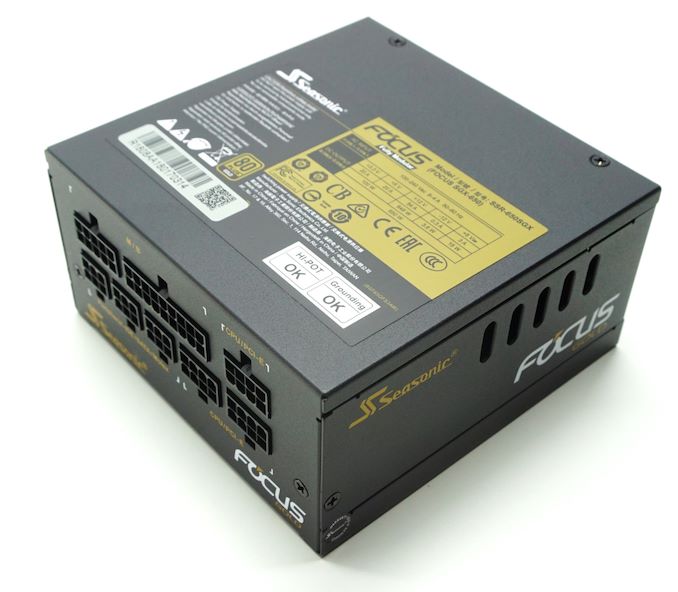
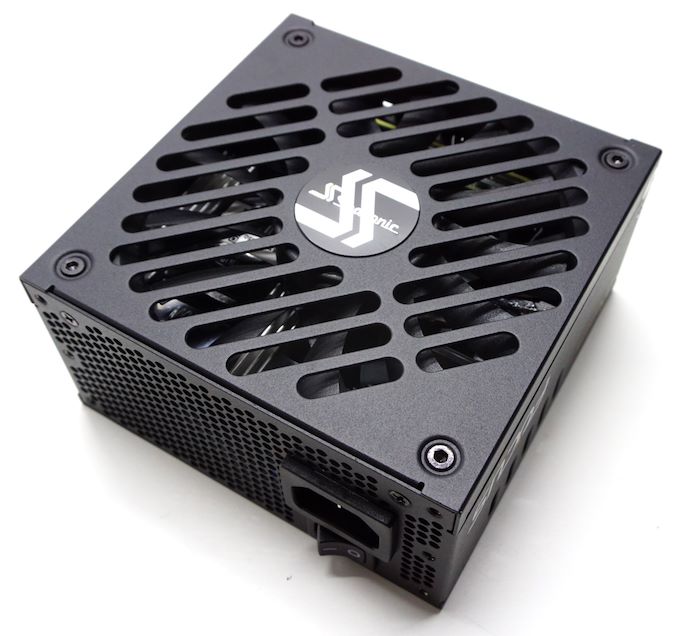
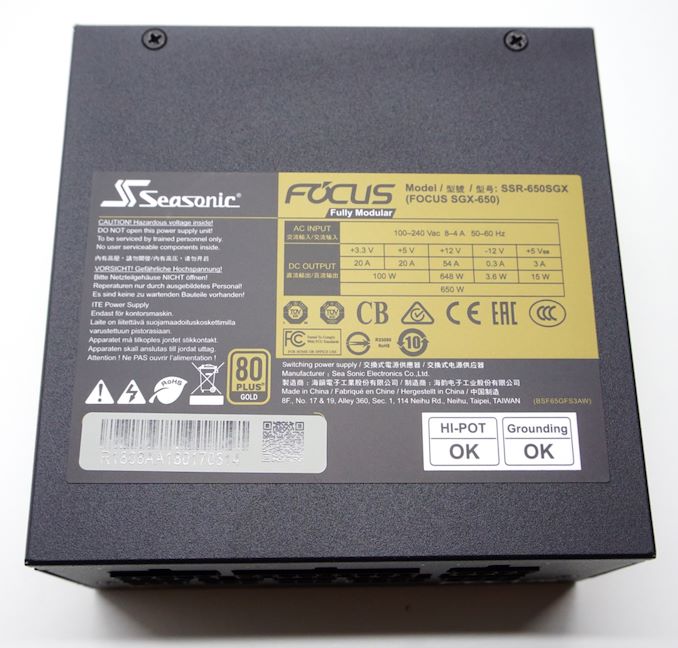
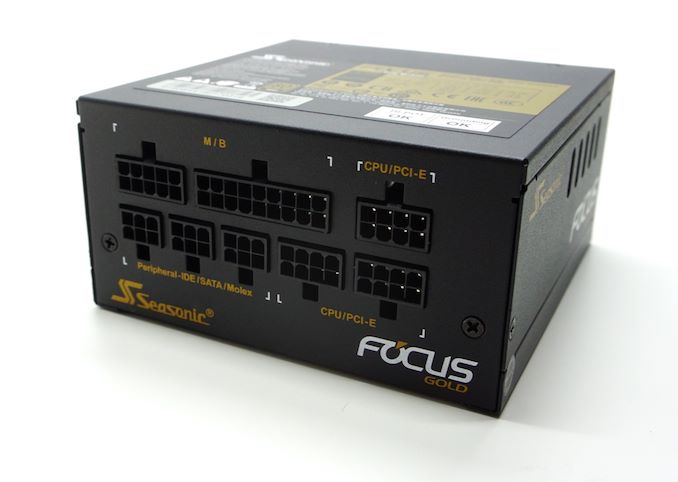
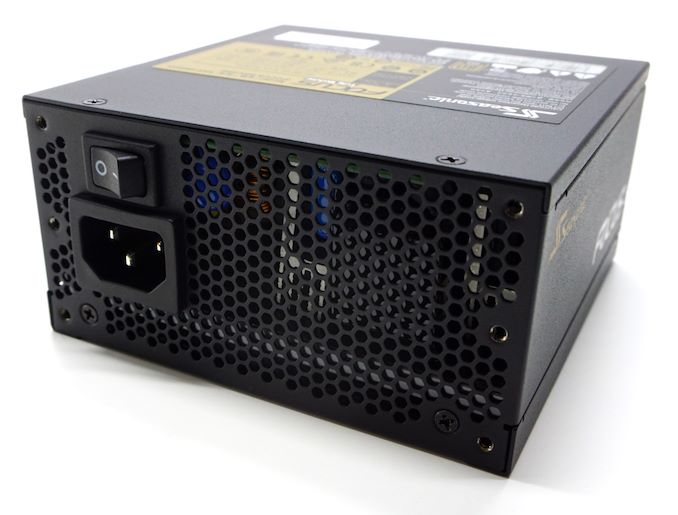
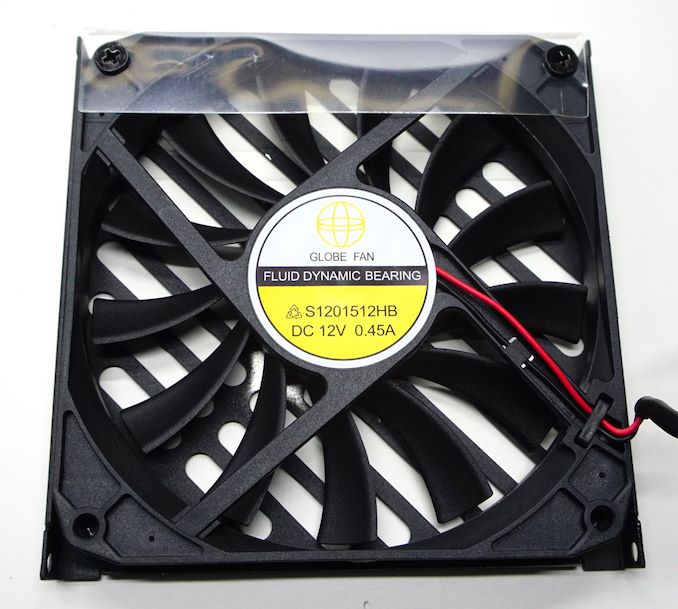
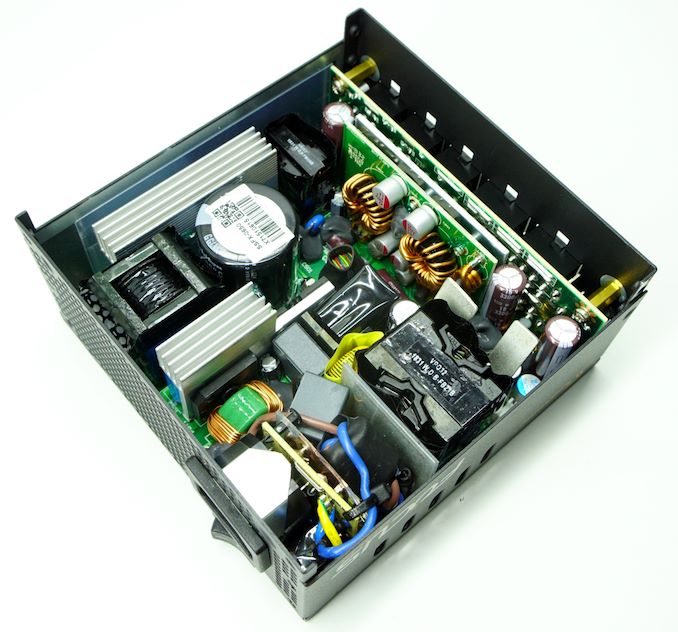
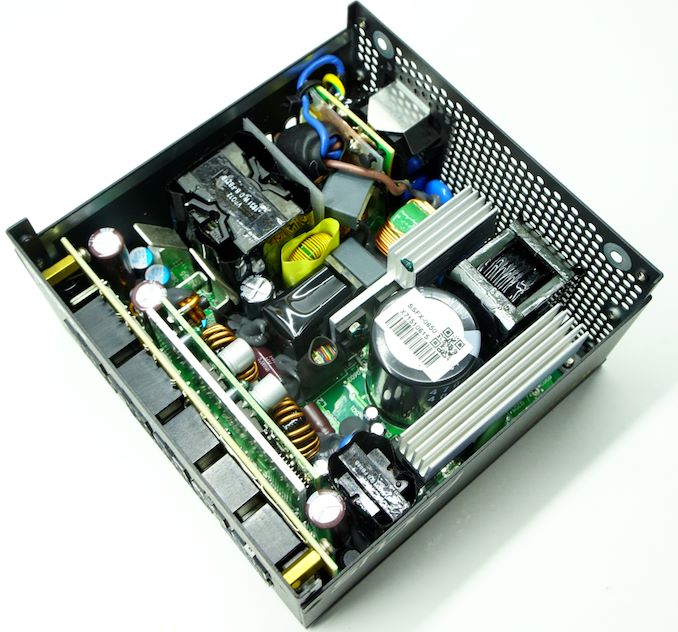
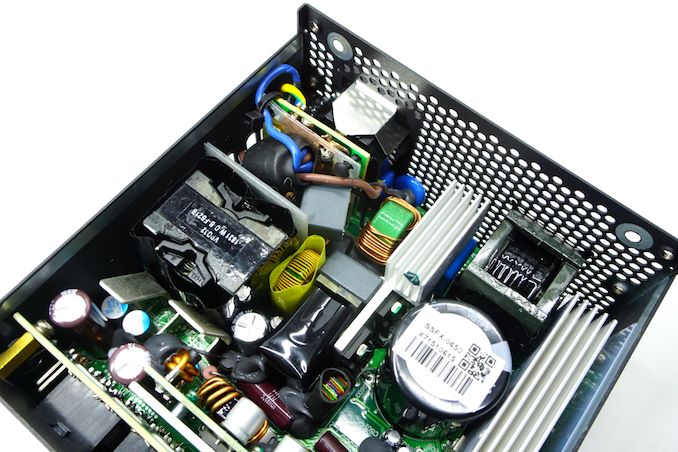
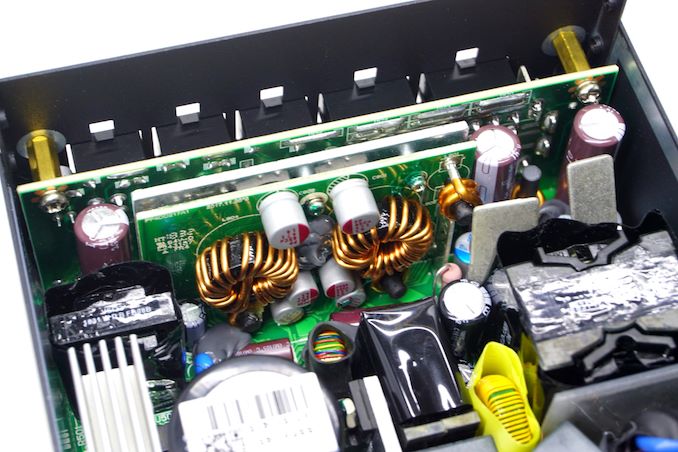
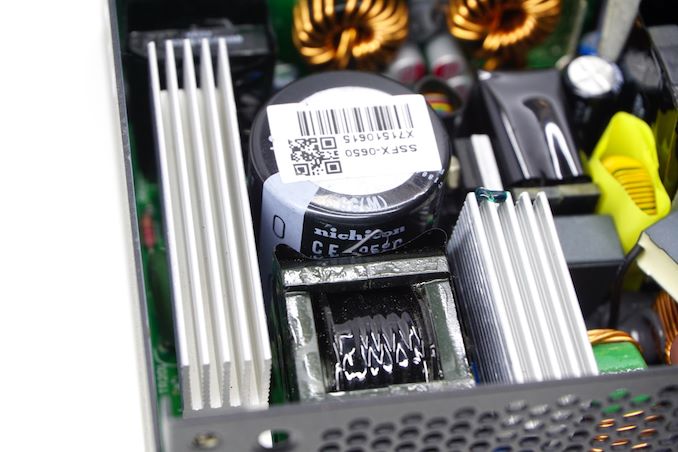








38 Comments
View All Comments
Mr Perfect - Thursday, March 7, 2019 - link
Aww, this got my hopes up. The case I have only really works with SFX, not SFX-L and the headline called this a SFX. But hey, at least Seasonic is addressing the SFF market now. For ages they've just ignored the enthusiast SFF segment.abrowne1993 - Thursday, March 7, 2019 - link
Yep, the included Amazon link even mentions that it's SFX-L in the description. Should really be specified more clearly here.E.Fyll - Thursday, March 7, 2019 - link
Technically speaking, there is no SFX-L standard; that's just a term made up by SilverStone in 2013 (or 2014, my memory fails me) to describe their SFX units that were longer than 100 mm. I try and only use that term for SilverStone's products as it does not really apply to any other manufacturer (unless they choose to use the term themselves). SeaSonic even specifies that the form factor of the SGX-650 is Intel SFX in the product's manual, which this unit clearly is not fully compliant with. I cannot just baptize it whatever I want myself though, I can only state the facts, as I did on the second page of the review.piroroadkill - Friday, March 8, 2019 - link
Once enough products fall into a "made-up" standard, it becomes a de-facto standard. That's just how it is.Death666Angel - Friday, March 8, 2019 - link
That seems like a weird cop-out. All price comparison websites in Germany I know of have SFX-L as a seperate tab and they are not only comprised of Silverstone PSUs. Who do you want to standardize the form factor anyway? As far as I can see, Intel standardized ATX and Via standardized ITX. Are we supposed to just call ITX motherboards not made by Via as "smaller than ATX" motherboards in one paragraph and then just call them ATX in the rest of the review? And of course you can "baptize" the PSU however you want in a review you are writing yourself, just give sufficient explanation and people will more than likely thank you for being more clear than the manufacturer. If you just repeat the manufacturers talking points, reviews are useless. Call a duck a duck and not a somewhat misshapen swan. If someone is first to market with a good idea, they get to name it. If the idea is so good that others start to copy/adopt it, the name likely becomes the standard for the industry.DanNeely - Friday, March 8, 2019 - link
The thing is that despite Seasonic using the term on their amazon marketing it doesn't quite fit Silverstone's made up SFX-L standard, which is 130x125x63.5. Seasonic made this one 125x125x63.5; which is a hair smaller. Unless bastardized SFX PSUs start to proliferate (like long ATX supplies have) it probably doesn't matter since everything will either be the actual standard and only support 100mm long supplies or support the 130mm length Silverstone's marketing is calling SFX-LE.Fyll - Friday, March 8, 2019 - link
I believe that using your own example will help you understand why SFX-L is not a real standard.For something to classify as a "standard", it first has to have at least some basic specifications published (and adopted by a significant portion of the industry, but even just published would do). When VIA proposed the Mini-ITX standard, they published a lengthy white paper indicating its precise dimensions, expected energy requirements and dissipation, reference guides, etc. On the other hand, "anything longer than 100mm" does not classify as a standard at all and that is why SFX-L has not been adopted as a real standard by the industry. If it eventually will, it will have to clarify precisely how long the product should be.
And, as I said above, that term was just SilverStone's invention. I cannot pretend to know what their intentions were as a company but the fact is that it never actually was anything more than a marketing term. Besides, you are not calling ATX PSUs that are more than 140 mm "ATX-L", are you?
lmcd - Thursday, March 14, 2019 - link
Why put SFX at all if it's not valid SFX? Why not just put ATX, as it's more compliant with ATX than SFX? There's even an ATX bracket included, so it clearly can be used where an ATX PSU is expected.And that's why SFX-L is the correct moniker here.
Mr Perfect - Saturday, March 9, 2019 - link
That's interesting, today I learned that SFX-L isn't a defined standard.Samus - Monday, March 11, 2019 - link
The irony is the silverstone sfx unit you are mentioning is a 550w standard length SFX PSU, though not modular. Ironic, because this Seasonic - as good as it is, really can’t handle beyond 550w at high temps where the silverstone can.The silverstone is $40 less.